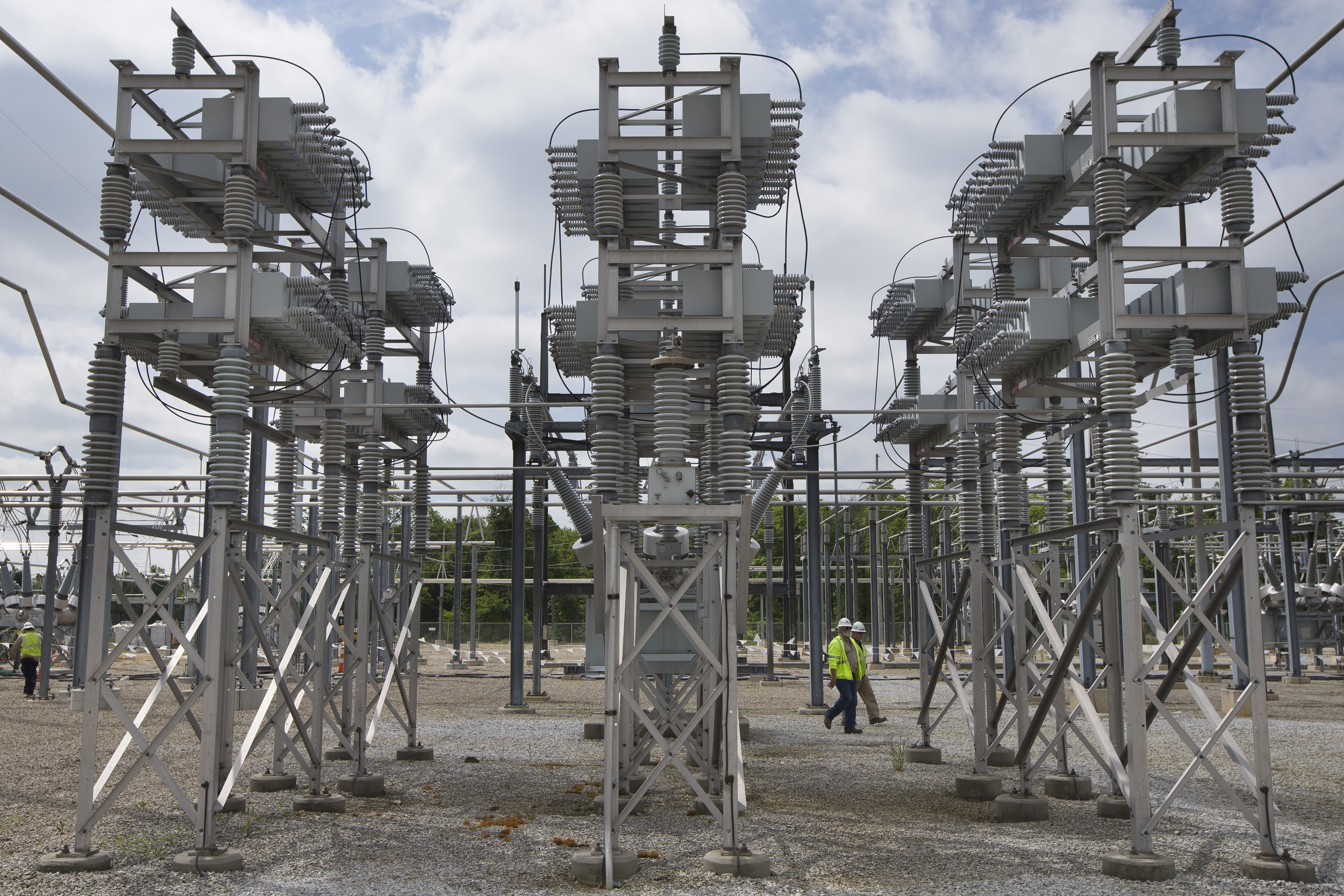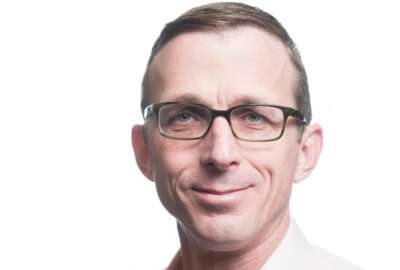Hubbard Radio Washington DC, LLC. All rights reserved. This website is not intended for users located within the European Economic Area.
Federal researchers are running simulations on the power grid of the future
Electric cars, more windmills, more solar power, add it up and the nation is facing a crisis in the electrical grid needed to support it all. That is, if you wa...
Best listening experience is on Chrome, Firefox or Safari. Subscribe to Federal Drive’s daily audio interviews on Apple Podcasts or PodcastOne.
Electric cars, more windmills, more solar power, add it up and the nation is facing a crisis in the electrical grid needed to support it all. That is, if you want 24 x 7 power. Researchers at the Pacific Northwest National Laboratory have been running simulations of a system called transactive power, to see how a future grid might operate. Joining the Federal Drive with Tom Temin details, senior technical advisor, Dr. Hayden Reeve.
Interview transcript:
Tom Temin: Dr. Reeve, good to have you on.
Hayden Reeve: Thanks, Tom, great to be here.
Tom Temin: And we hear a lot about what’s the new sources of power and the new demands on power, if every car had to be charged, it would have an effect on the electrical grid. So what are you trying to figure out here?
Hayden Reeve: So yeah, at PNNL, the Department of Energy has funded a study to look at really how we can get more flexibility out of existing loads and other assets on the grid. So you can think of this as your electric vehicle, your water heater, your pool pump, how do you make that flexible to charge at different times to manage the overall load on the grid.
Tom Temin: And so that gets to the idea of transactive. And you mean transactive between individual homes or owners of facilities, and the electrical utility?
Hayden Reeve: Correct. And so this is done through a retail marketplace. So essentially, price signals are used as signals to coordinate these loads. So you could think of it as an incentive, if you are an electric vehicle owner, to charge your vehicle, either during the middle of the day where there’s lots of solar, or overnight where there’s low load. And this market is sort of continuously running to optimize and harmonize these loads along with the supply on the grid.
Tom Temin: Well, how does it work in a realistic scenario, say, you know, the average person works 9-5 say, well, assuming people are going to work at some point. So they are driving from 8-9. And so their car has to be charged by 8:00, then wouldn’t most people want to be charging overnight? And then so how could you have a transactive system of 80% of the people on one charging at the same time.
Hayden Reeve: So that’s where the simulation comes in. So in this simulation, we modeled over 60,000 different customers on a region the size of Texas. And this allowed us to understand the behavior of different customers and put in these different constraints. So we ensure that everybody had their car charged or their homes cooled or heated to meet their preferences, but also make sure that these loads can be reduced versus a sort of business as usual baseline. And in that we saw peak load reductions of 10% to 15%.
Tom Temin: Got it. Tell us about the simulation, you say the size of Texas, was it also like the layout and grid architecture of Texas or just the number of users?
Hayden Reeve: We based the simulation on the region of Texas because we consider it to be fairly representative of the nation as a whole, both in terms of the energy mix, as well as the loads on the system. And so we didn’t use the exact configuration of everything. But it did allow us to compare our results, the actual market prices and loads in Texas to give us confidence about the representation of the electric grid.
Tom Temin: Is one of the difficult variables to predict here, though, the cost of the source itself because nobody likes it anymore. But coal was really cheap to produce electricity, whereas some of the newfangled ways are more expensive, even though they produce less emissions. Is that part of what you had to bake into this to know what the price might be per kilowatt?
Hayden Reeve: Yeah, we were modeling the entire grid, including the economic cost structure. And we compared our baseline results with existing cost of operation across the U.S. And we were within about 10%. And then we were doing comparisons about the savings, and then the source of savings. And so one of the big savings for getting more flexibility into the grid, is you just don’t have to build as much infrastructure. So you can think of this as getting us 10% to 15%, closer to the end goal as far as required infrastructure.
Tom Temin: So infrastructure, meaning not the generation capacity, but the distribution and load balancing and all those things the grid does.
Hayden Reeve: It’s all of it. It’s the generation capacity transmission distribution.
Tom Temin: In other words, we could with the right systems and plans in place the right policies, perhaps limit or reduce the future need for generating capacity?
Hayden Reeve: We can certainly reduce it by bringing that peak down.
Tom Temin: We’re speaking with Dr. Hayden Reeve. He’s a senior technical advisor to the Pacific Northwest National Laboratory. So what’s the output of all of this work? Who can use it and how can they avail themselves of it?
Hayden Reeve: Yeah, so we produced a number of different reports. So the study had three main elements. Its overall simulation, and we are making the key tools of that simulation available. It is sort of the economic model, and then we have a sort of a representative transactive design. And these kinds of results are informing other practitioners in the space and there’s other work going on at PNNL and other places. So for example, we’ve run a transactive system on our campus. We’re working with utilities to demonstrate this out in the field as well.
Tom Temin: So then this could also help utilities develop a different business model vis-à-vis their customers.
Hayden Reeve: Yeah, it’s a way for them to coordinate the emerging number of distributed energy resources on the grid, whether that be solar electric vehicles, more and more heat pumps, for example.
Tom Temin: And does it also take into account say, more and more people putting solar roofs on their very houses, which I’m told can also put electricity back to the grid when it’s sunny out, and you’re not home?
Hayden Reeve: Exactly. And so in this study, we looked at two different scenarios, one representative of today’s sort of supply mix, and one with a higher amount of renewables, where we had 40% of the total generation coming from wind and solar.
Tom Temin: And would this also apply to operators of commercial facilities, factories, office buildings, you know, the federal government is looking for evermore value for its energy dollar for the millions and millions of square feet it operates, for example,
Hayden Reeve: Exactly. So we included commercial buildings and having the air conditioning be flexible. And there are other loads you could include that we’re outside the scope of this study. So for example, lots of industrial loads, commercial refrigeration is a good example of a flexible load, where you can use the thermal mass that’s a refrigeration system to move the load around.
Tom Temin: And do you think Americans should learn to like warm beer?
Hayden Reeve: The beauty of this is you can do this without affecting your preferences, right? You find the inherent thermal mass or flexibility in this system. And the other key aspect of our approach is the consumer is really in charge of setting their preferences. Do you want to have improved comfort? Or do you want to be a little bit flexible and save money?
Tom Temin: Some utilities have offered this type of service over the years. You can change, like you say, when you heat your hot water, or when you run air conditioning and heating and so forth, and maybe give up a little to gain a little money. But it’s not been a widespread take up, I guess, of these types of exchanges?
Hayden Reeve: Yeah, I think there’s a number of proof points of sort of the ability and benefit of doing this. And I think there’ll be a growing opportunity to do this sort of day in day out as we get more variable generation on the grid, as well as the need for more flexibility to manage through sort of extreme events we’ve seen in the grid as well.
Tom Temin: All right, well, let’s hope this all bears fruit. We’re glad you’re doing this project, because I think a lot of people are worried about the grid. And we should be worried about it, shouldn’t we?
Hayden Reeve: The grid powers critical infrastructure, so it’s important that it be reliable. And I think there’s a big opportunity to bring that demand flexibility. Traditionally, the grid has been sort of supply driven in terms of its operation. And now this is sort of bringing an additional dial to the table in terms of being able to get the demand more flexible to meet the needs.
Tom Temin: And are you an economist or a electrical engineer?
Hayden Reeve: I’m actually a mechanical engineer by background. So I came sort of out of the smart building side. But we have pulled together a team here at PNNL of economists house system engineers, building scientists, computer scientists to pull this together.
Tom Temin: Dr. Hayden Reeve is a Senior Technical Advisor to the Pacific Northwest National Laboratory. Thanks so much for joining me.
Hayden Reeve: Excellent, thank you.
Copyright © 2024 Federal News Network. All rights reserved. This website is not intended for users located within the European Economic Area.
Tom Temin
Tom Temin is host of the Federal Drive and has been providing insight on federal technology and management issues for more than 30 years.
Follow @tteminWFED





